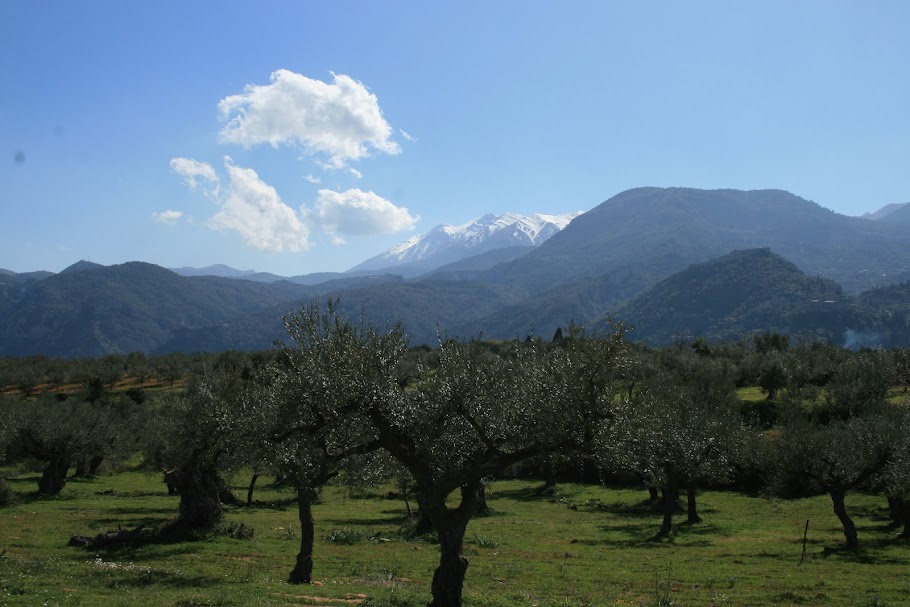While some scholars (e.g. Chimes (1)) have questioned the magnitude of the decline, most accept the numbers and prefer to concentrate on blaming the Spartans for their problems. Aristotle, of course, blamed Sparta’s women for everything since they could inherit property, and women are, according to him, inherently greedy, grasping and irrational. Hodkinson (2) ran demographic models to demonstrate how female inheritance leads to concentrations of wealth over seven generations. Other historians focus less on how wealth became concentrated in a few hands and more on the fact that as increasing numbers of Spartans lost their citizenship due to poverty, the Spartan state failed to respond adequately to the resulting crisis by opening the citizenship ranks.
In short, the Spartans, due
to their abnormal laws (female inheritance and polyandry) and their fanatical and
irrational adherence to these laws, are to blame for their own decline. But as
Figueira (3) has pointed out, Sparta’s population was growing or at least
stable throughout the archaic period.
Either the laws on female inheritance and polyandry did not exist in the
archaic period, or they cannot be made responsible for the decline in Sparta’s
population in the classical.
The Great Earthquake of 464, on the other hand, is an event which allegedly took 20,000 lives in Sparta alone, and its role in Sparta’s decline needs to be re-examined. The accounts of the earthquake are nothing if not dramatic. Pliny claims only five houses were left standing, and there are less credible tales of youths surviving because they ran out of a gymnasium to chase a hare, while the army was saved by being marched out in time. While the details may be hard to credit, I think it is safe to say the earthquake was catastrophic without, notably, impacting the strength of the army.
Meanwhile, while some
historians dismiss the ancient accounts as incredible, Hodkinson goes to the
other extreme of dismissing “modern guesswork” about women and children being more
heavily impacted by the earthquake simply because it is not mentioned in ancient sources. Given the misogynous bias of our
ancient sources and the focus of most ancient accounts on Sparta’s military
strength, I have no problem using common sense in the absence of a specific
reference. Ancient sources rarely mention women or children in any other
context either!
Following Figueira’s overall
thesis that the Great Earthquake was the catalyst that set off a chain reaction
ending in Sparta’s decline, I’d like to suggest that the impact might have been
even more dramatic than Figueira contends.
My thinking is as follows: If –
as is reasonable – women and young children were killed in disproportional
numbers, then the size of the Spartan army would not been seen to decline for almost thirty years. This is because the youth of the agoge were not disproportionately affected, so youths
would have continued to graduate from the agoge and fill the ranks of the army for
at least 14 years after the earthquake. Thereafter, for at least another 10 to
15 years, it would have been easy to maintain front-line strength by retaining
men who would normally have gone off active service, i.e. by increasing the number
of reserve age-cohorts on active duty.
Only when the age of the reservists made it unpractical to retain them,
would the dramatically reduced numbers of graduates from the agoge become
evident in the army.
The number of children entering the agoge, on the other hand,
would have declined dramatically in the first seven years because of the
children killed outright and thereafter because of the missing mothers -- or
more acutely, the missing wives. The men already married, who marched to safety,
would have lost their wives, while the youth in the agoge would have lost their
future brides. Obviously, some women
survived, but if the number of surviving women was significantly
disproportionate to the number of men, then the situation might have fostered
the introduction of polyandry. It is
significant that polyandry is not mentioned in Herodotus. The hypothesis of
disproportionate casualties among women, maidens and girls would help explain
not only the population decline of the second half of the 5th
Century but also the evolution of such a peculiar custom for this part of the
world at this period.
The shortage of Spartiate
women would also explain the emergence of new-classes of quasi-citizens such as
mothakes/mothones, nothoi, and neodameis. If there was a shortage of Spartiate female
sexual partners following the earthquake, it would be only natural for the men,
particularly the bachelors, to take perioikoi, helot or even foreign women – if
not to wife – at least to their beds. They would then, particularly in face of the
increasingly acute military manpower shortage, have had a strong interest in
seeing the sons of these unions educated and at least partially integrated into
the system. The fact that none of the above terms is found in reference to
pre-earthquake individuals suggests to me that such classes of quasi-citizens
either had not existed before or had not existed in sufficient numbers to be
worthy of mention.
All in all, the thesis of
“missing mothers” seems to explain more about Sparta’s decline in the later 5th
Century BC than any other theory I have seen put forward.
(2) Stephen Hodkinson, Property and Wealth in Classical Sparta, The Classical Press of Wales, London, 2000.
(3) Thomas Figueira, “Population Patterns in Late Archaic and Classical Sparta,” Transactions of the American Philological Association 116 (1986), pp.165-213.
